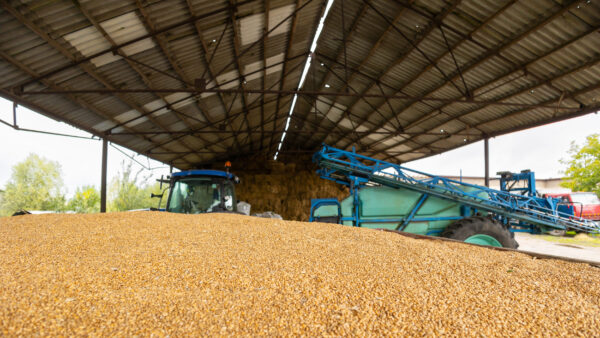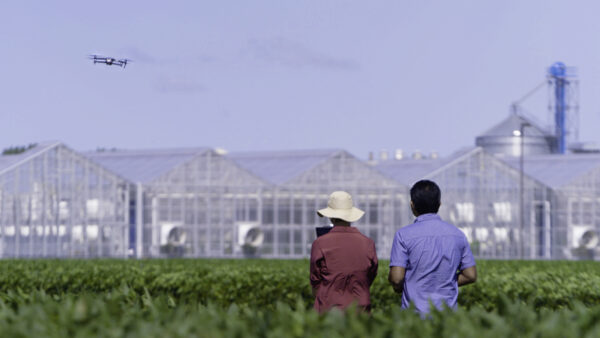Plant breeders need a regulatory environment that allows them to meet the needs of the farmer and end-user, attendees of Seed Summit 2022 heard.
In the third and final session of Seed Summit 2022, a central message was driven home for those in attendance: plant breeders need the regulatory freedom to create better varieties to meet the ever-evolving needs of both farmers and consumers.
The theme of the session, Variety Development and Delivery, capped off an event that was initiated by Seeds Canada in partnership with a slate of producer and commodity groups to help inform the Seed Regulatory Modernization (SRM) process.
Previous sessions covered the topics of producer needs as well as an initial session on the past-present and future of the seed system.
This time around, attendees heard from keynote speaker Marcel Bruins, who got his plant breeding education from Wageningen University in the Netherlands and is also editorial director for European Seed magazine, Germination’s sister publication.
A panel of speakers held afterwards was made up of Karen Churchill, president and CEO at Ag-West Bio; Martin Entz, a plant scientist at the University of Manitoba; Jodi Souter, an independent plant breeder and founder of J-4 Agri Science; and Krista Thomas, vice-president trade policy & seed innovation at Canada Grains Council.
Bruins, known worldwide as an authority on plant breeding innovation, spoke about what is needed to deliver varieties from plant breeders to the market as efficiently as possible. A good regulatory environment to enable innovation is key and designing that regulatory environment while keeping a global perspective in mind is crucial, he said.
While every country differs in terms of its individual needs, Bruins emphasized that a modern regulatory system:
- Includes an effective system of plant variety protection
- Provides for seed quality assurance for better on-field performance through improved seed sampling, seed testing and storage capabilities
- Features an internationally acceptable seed varietal certification system for seed movement nationally and internationally
- Facilitates growth of local seed industries to ensure farmer access to improved varieties and seeds
- Encourages participation of farmers in relevant discussions and access to new plant varieties and sustainable and affordable seeds
“More and more studies are becoming available that show the benefits of plant breeding. In all those studies, the main message each time is that society, and especially farmers, reap the largest chunk of all the benefits of plant breeding,” said Bruins, who is also a past secretary-general of the International Seed Federation (ISF).
Strong Reputation
Canadian exports of cereals, oilseeds and pulses amount to more than $25 billion annually, and Canada depends on its reputation as a reliable and trusted supplier of high-quality grains and oilseeds, said Krista Thomas, vice-president trade policy & seed innovation at Canada Grains Council.
Canada competes on trust and reliability, this sets us apart from lower cost competitors, she noted.
“Consultation with end-users to understand their needs is important, and I want to recognize the Seed Summit process for looking at the system as a whole,” Thomas said.
Unlike lower cost competitors, having a competent regulatory authority covering the seed program could be an advantage in some markets and situations, because it provides transparency and can help to establish trust, Thomas said.
“It is important to understand those benefits so that if the seed regulatory landscape changes, we can achieve it another way. Nimble, flexible regulations allow farmers access to innovation and this is important to Canada’s ability to compete in the global marketplace. When updating regulations, government should be asking ‘how can we fulfill our mandate in the manner that best helps industry succeed?'”
Jodi Souter, an independent plant breeder and founder of J-4 Agri Science, said Canada must continue to have a strong reputation for plant breeding innovation by encouraging diversity in the breeding community.
“For public breeders, there are nuances between how you breed as a government-funded breeder versus breeding as an academic breeder,” she said.
“When it comes to private breeders, there are two main groups represented by breeders who work at the large established multinationals, and the small startups like mine or the small- and medium-sized enterprises.”
Despite their being differences among different breeding spheres, Souter said it’s crucial that all breeders work within a regulatory system that allows them to do their job without being held back by restrictions that hinder their ability to innovate.
“Breeders have the benefit of being able to work with every level of the supply chain to meet the needs that exist, whether those needs be on the part of farmers, processors or consumers. But to do that, you want your breeders to breed and do what they were trained to do. They can only do that to their full ability if the regulatory system allows it,” she added.
“A regulation put into place in the 1990s might not be effective anymore and might be holding them back, for example. As we work through SRM, we need to ask ourselves if we can streamline things to get better results. Are their redundancies we can get rid of that will get breeders out of an office and into a lab or field?”
Boundaries, not Barriers
Regulations should not serve as barriers to innovation, but rather give clear boundaries for innovators to work within to ensure they can practice their craft but at the same time ensure they serve market needs.
“Ag West Bio has a mandate to bring research to market, and that’s a huge challenge. Our breeders are great at developing varieties, but the market is not necessarily so great at adopting them. An efficient regulatory system is going to be absolutely key,” said Karen Churchill, president and CEO at Ag-West Bio.
Right now, approximately 20% of the land farm on the Prairies is either not profitable or not environmentally sustainable, she pointed out. As input costs go up, the way farming is done is going to change, and the regulatory system must meet that challenge.
“For example, farmers could be going to be growing multiple varieties in different areas of a field. That means our variety development system needs to be able to produce tailored varieties and our regulatory system could need to adapt to field inspections of multiple varieties or crops in one area.”
But plant breeding innovation comes in many different forms, noted Martin Entz, a plant scientist at the University of Manitoba. A modern regulatory system needs to consider that the concept of innovation encompasses many different areas and doesn’t just take place in a lab.
“The definition of innovation needs to be broadened. So much of the emphasis right now is on genes and getting the right genes into the plant, but their expression is not always guaranteed. When we talk about genes for growth tolerance, for example, we need to be careful. Many genes express themselves on many levels,” he said, referring to organic farming specifically.
“That’s why we have to actually involve farmers in the first three generations of selection on organic farms. The innovation we talk a lot about — where we are tweaking the genome in a lab setting — is of great value, but it’s not the complete story of innovation.”
For a recap of the entire summit visit our Seed Summit 2022 archive.












